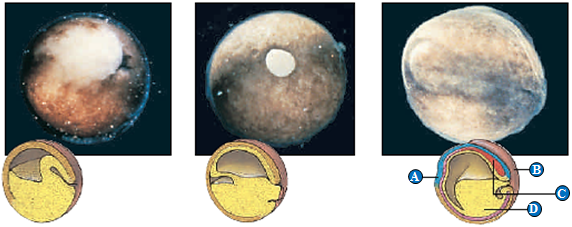
Figure on p. 737
Use the figure above showing the process of gastrulation to answer the following question.
The letter "C" in the accompanying figure represents ____.
A. ectoderm
B. endoderm
C. mesoderm
D. neural plate
E. yolk
Answer: C
You might also like to view...
The major histocompatability (MHC) molecule is important in a T cell's ability to _____
A) distinguish self from nonself B) recognize specific parasitic pathogens C) identify specific bacterial pathogens D) identify specific viruses E) recognize differences among types of cancer
You are working in the field with your favorite bacteria species, Bacterium BB. You carry out some experiments with Bacterium BB, and find that it can now degrade toluene and it is pathogenic! What happened?
A. Bacterium BB acquired degradative and virulence plasmids by horizontal gene transfer. B. Bacterium BB picked up fertility and Col-plasmids via conjugation. C. Bacterium BB was exposed to a bacteriophage which is now in its lytic phase. D. Bacterium BB was transformed with a resistance plasmid and a digestive plasmid. E. Bacterium BB sexually reproduced with another strain of bacteria that had both toluene-degrading gene and virulence gene.
____________________ are open channels that connect the cytoplasm of abutting cells and permit rapid transfer of
ions and small molecules between them. Fill in the blank(s) with the appropriate word(s).
In their experiments with the flowers of Begonia involucrate, Agren and Schemske (1991 ) observed that there was a trade-off between what two characteristics?
What will be an ideal response?